UP FRONT: RACING IS KILLING DRAG RACING
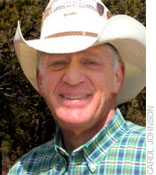 This is an editorial that will anger crew chiefs and team owners. It will result in comments like “What the hell do you know about it?” It will produce negative comments such as those that swirled around the suggestions that Hall of Famer Dale Armstrong made about slowing the cars. Numerous tuners – apparently oblivious to history – decried Armstrong’s suggestions, some of them actually saying, “He doesn’t know what’s going on out here. He‘s not out here every week,” as if he’d forgotten everything that had made him one of the most brilliant individuals to have ever been involved in the sport.
This is an editorial that will anger crew chiefs and team owners. It will result in comments like “What the hell do you know about it?” It will produce negative comments such as those that swirled around the suggestions that Hall of Famer Dale Armstrong made about slowing the cars. Numerous tuners – apparently oblivious to history – decried Armstrong’s suggestions, some of them actually saying, “He doesn’t know what’s going on out here. He‘s not out here every week,” as if he’d forgotten everything that had made him one of the most brilliant individuals to have ever been involved in the sport.
So, recognizing that this isn’t going to go down well with a lot of people, I’ll forge ahead regardless, because if some things about professional drag racing don’t start changing, and I mean changing in short order, our already declining attendance is going to disappear altogether.
As the title states, racing is one of the primary problems with today’s NHRA Drag Racing agenda. Wait! Isn’t this supposed to be about racing? Well, yes and no. Pure drag racing is one thing, but without an aspect of showmanship thrown in the activity is without soul, without charisma and without a hook to bring in the casual fan. And without that casual fan we’re going nowhere because there aren’t enough hard core fans to fill the seats and make the endeavor profitable.
 This is an editorial that will anger crew chiefs and team owners. It will result in comments like “What the hell do you know about it?” It will produce negative comments such as those that swirled around the suggestions that Hall of Famer Dale Armstrong made about slowing the cars. Numerous tuners – apparently oblivious to history – decried Armstrong’s suggestions, some of them actually saying, “He doesn’t know what’s going on out here. He‘s not out here every week,” as if he’d forgotten everything that had made him one of the most brilliant individuals to have ever been involved in the sport.
This is an editorial that will anger crew chiefs and team owners. It will result in comments like “What the hell do you know about it?” It will produce negative comments such as those that swirled around the suggestions that Hall of Famer Dale Armstrong made about slowing the cars. Numerous tuners – apparently oblivious to history – decried Armstrong’s suggestions, some of them actually saying, “He doesn’t know what’s going on out here. He‘s not out here every week,” as if he’d forgotten everything that had made him one of the most brilliant individuals to have ever been involved in the sport.
So, recognizing that this isn’t going to go down well with a lot of people, I’ll forge ahead regardless, because if some things about professional drag racing don’t start changing, and I mean changing in short order, our already declining attendance is going to disappear altogether.
As the title states, racing is one of the primary problems with today’s NHRA Drag Racing agenda. Wait! Isn’t this supposed to be about racing? Well, yes and no. Pure drag racing is one thing, but without an aspect of showmanship thrown in the activity is without soul, without charisma and without a hook to bring in the casual fan. And without that casual fan we’re going nowhere because there aren’t enough hard core fans to fill the seats and make the endeavor profitable.
You can’t fault the car builders, aftermarket parts suppliers, tuners, crew chiefs or drivers for the predicament that drag racing finds itself in. And you can’t point a finger at NHRA and say, “There’s the problem,” because while they do bear some responsibility by virtue of allowing the use of ever more expensive and exotic parts, parts that, in reality, aren’t really “needed,” everyone involved has had a hand in turning what used to be a great show into today’s highly regimented, formatted program of one boring run after another. There are far too many national events at which the spectators seem glued to their seats because there’s simply nothing exciting enough to get them to stand up and cheer. That wasn’t the case in days gone by.
Before we go any further, please note that I’m not going to wax nostalgic about the so-called good old days, because as much fun as those days may have been, you can’t go home again. This is about the now and the need to fix things before we’re all saying “Remember how cool drag racing was in 2013?” Well, it’s not particularly cool. It’s actually kinda boring, and don’t take my word for it. Ask those spectators with their butts glued to the seats, or those that didn’t show up in the first place, if you can find them.
Without beating the point to death, we all know the goal of everyone directly involved with a race car is to make it the quickest and fastest machine in the class. Short of outright cheating, the men and women charged with those responsibilities will do whatever it takes to get the job done, and we’re certainly not faulting them for that. Heck, that’s their job description. But, in pursuing those very laudable goals they’ve unintentionally taken an endeavor in which every single car and driver had its own personality and turned it into an endless succession of cookie-cutter-like runs that are virtually indistinguishable, one from the other.
Full disclosure: My technical knowledge is minimal, and I’ve never claimed otherwise. But I do know the difference between excitement and boredom, and simplistically put, that describes drag racing three decades ago and now.
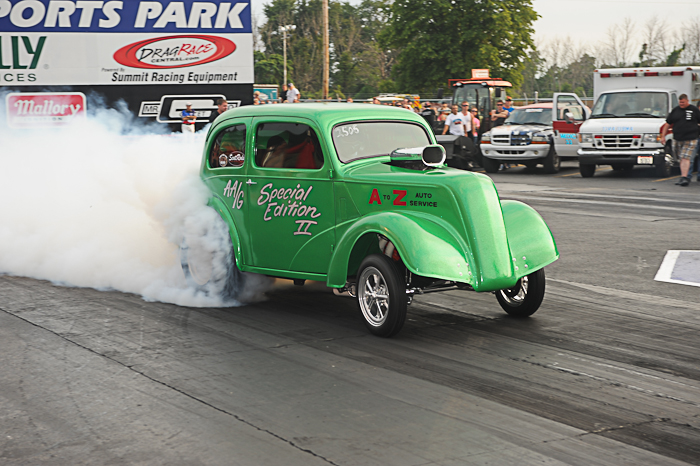 At Norwalk’s Night Under Fire this burnout by an A/Gas Supercharged car prompted an astonishing comment from a current Funny Car driver: “We’ve got to start doing stuff like this.” He reacted that way because he could plainly hear 30,000 fans wildly screaming in the background when the little green monster came to a stop about 300 feet past the starting line. So what did he do when it was his turn to run? His usual tire-smoker that began in the water box and ended at the starting line, which drew exactly zero response from the crowd. Now, let’s give this rookie driver, Chad Head, his due, and hope that he improves those burnouts as time goes by.
At Norwalk’s Night Under Fire this burnout by an A/Gas Supercharged car prompted an astonishing comment from a current Funny Car driver: “We’ve got to start doing stuff like this.” He reacted that way because he could plainly hear 30,000 fans wildly screaming in the background when the little green monster came to a stop about 300 feet past the starting line. So what did he do when it was his turn to run? His usual tire-smoker that began in the water box and ended at the starting line, which drew exactly zero response from the crowd. Now, let’s give this rookie driver, Chad Head, his due, and hope that he improves those burnouts as time goes by.
His father, Jim, got the message and did a killer burnout in his Nostalgia F/C, much to the delight of the crowd, but the effort damaged the drivetrain. Head can fix that because the car was set up to run, not put on a show, and with Nostalgia Funny Cars the show is paramount, not a secondary consideration.
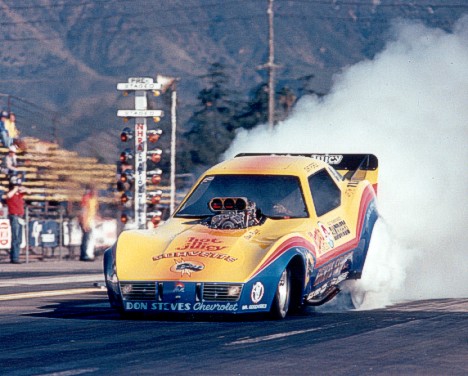 Ray English, Draglist.comBrace yourselves kiddies, but John Force didn’t become so popular because he’s won 15 titles. Beyond his outrageous personality Force became a superstar because he came out of the old match racing days, and for years did match race-like 600-, 700- and even 900-foot burnouts in national event competition. When Force came up to run the fans began yelling even before the engine turned over, and he wasn’t alone. Dean Skuza, Chuck Etchells and numerous others tried to match Force on those burnouts, and man, that was half the fun. The fans loved it because it was, well, showy.
Ray English, Draglist.comBrace yourselves kiddies, but John Force didn’t become so popular because he’s won 15 titles. Beyond his outrageous personality Force became a superstar because he came out of the old match racing days, and for years did match race-like 600-, 700- and even 900-foot burnouts in national event competition. When Force came up to run the fans began yelling even before the engine turned over, and he wasn’t alone. Dean Skuza, Chuck Etchells and numerous others tried to match Force on those burnouts, and man, that was half the fun. The fans loved it because it was, well, showy.
But then racing began to rear its ugly head, as tuners convinced their drivers that long burnouts heated up the clutch too much and did other things that were going to detract from the actual run performance. Show business gave way to racing, and the sport actually suffered for it, because a quick elapsed time or fast speed is quickly forgotten, but a 600-foot burnout lives forever. As a guy who I have great respect for put in an email earlier today, “Most of the time the speeds and ET are inconsequential, except when a barrier is crossed such as 200 MPH, 300 MPH or 5 seconds, 4 seconds…”
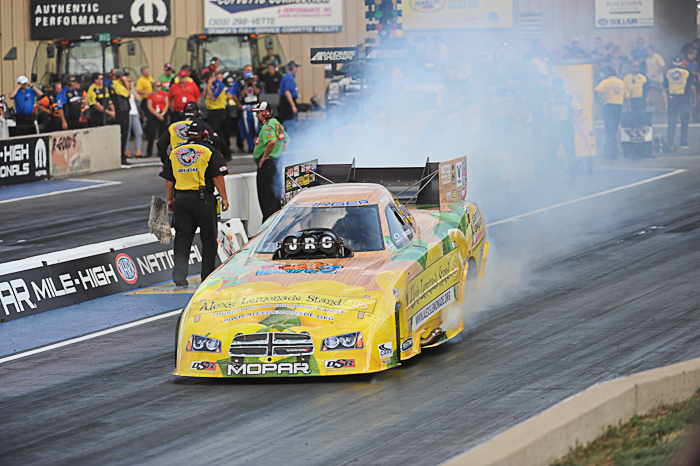 When’s the last time you remember anyone doing a long burnout at a national event? It simply doesn’t happen, and it’s actually understandable. Team owners have obligations to sponsors that include doing everything possible to win, and we get that, but at what cost to the sport? Sorry, but I don’t think this is what the fans really want to see. Despite the subject of this photo, it’s nothing personal towards Johnny Gray, because he’s certainly not alone with these workmanlike but uninspiring burnouts. Besides, he could bend me into a pretzel, so again, this isn’t personal.
When’s the last time you remember anyone doing a long burnout at a national event? It simply doesn’t happen, and it’s actually understandable. Team owners have obligations to sponsors that include doing everything possible to win, and we get that, but at what cost to the sport? Sorry, but I don’t think this is what the fans really want to see. Despite the subject of this photo, it’s nothing personal towards Johnny Gray, because he’s certainly not alone with these workmanlike but uninspiring burnouts. Besides, he could bend me into a pretzel, so again, this isn’t personal.
These problems aren’t limited to Funny Car, not by a longshot. Without meaning to offend anyone, it seems evident that drivers like Greg Anderson, Jeg Coughlin, Mike Edwards, Erica Ender-Stevens and Allen Johnson are never going to achieve the legendary status of the likes of Dyno Don Nicholson, Bill Jenkins, Dandy Dick Landy, Don Carlton and Ronnie Sox. Despite the fact that today’s media provides today’s drivers with far more broad-based exposure than those earlier drivers ever enjoyed, the sad fact is the best car handlers of the 2000s will likely be forgotten far sooner than will those of the late 20th Century.
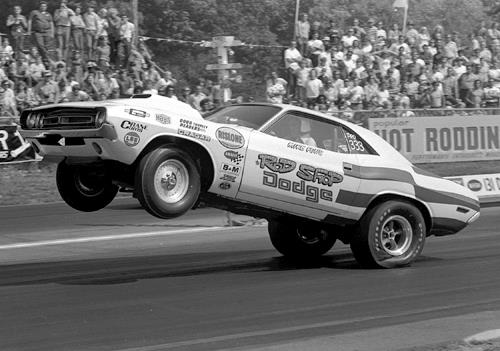 Pro Stock launch then as captured by Steve Reyes [top] and today's version.
Pro Stock launch then as captured by Steve Reyes [top] and today's version. 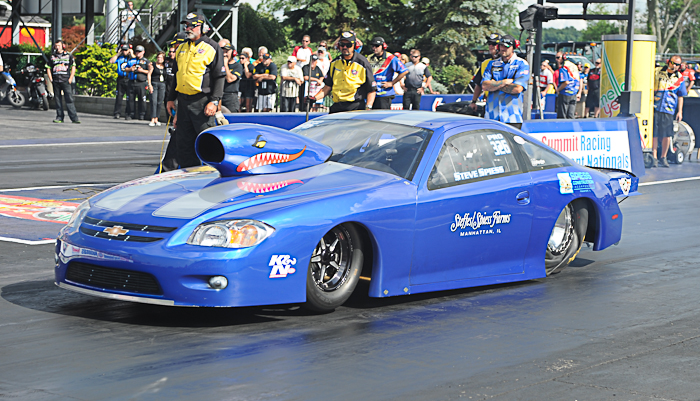 Here’s one reason why. There’s no denying that wheels-up leaves like this are a heck of a lot more fun to see than todays glued-to-the-track, endlessly repetitive, this-one-looks-just-like-the-last-one passes. More from my friend; “Look what happened to IROC or what’s now happening with IndyCar. Can you say ‘cookie cutter?’”
Here’s one reason why. There’s no denying that wheels-up leaves like this are a heck of a lot more fun to see than todays glued-to-the-track, endlessly repetitive, this-one-looks-just-like-the-last-one passes. More from my friend; “Look what happened to IROC or what’s now happening with IndyCar. Can you say ‘cookie cutter?’”
Again meaning no offense (but recognizing that whomever’s car appears here is going to think differently), is this the kind of launch that’s going to get you on your feet?
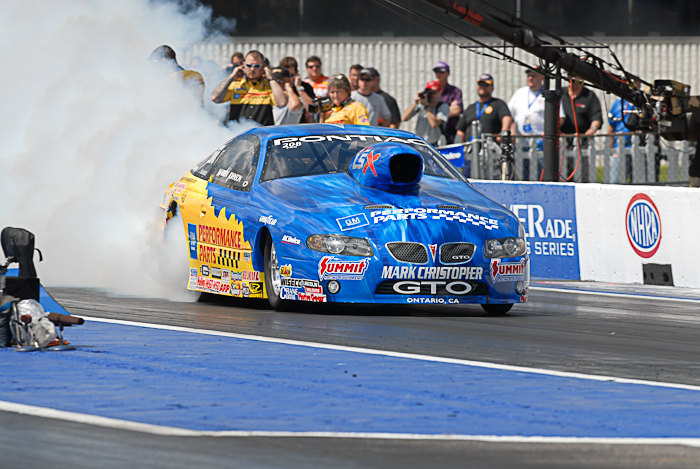 Even the burnouts performed by today’s Pro Stocks don’t match up against what they could be. The Professor can still teach, and this two-shot burnout sequence from the 2007 Gatornationals proves it.
Even the burnouts performed by today’s Pro Stocks don’t match up against what they could be. The Professor can still teach, and this two-shot burnout sequence from the 2007 Gatornationals proves it.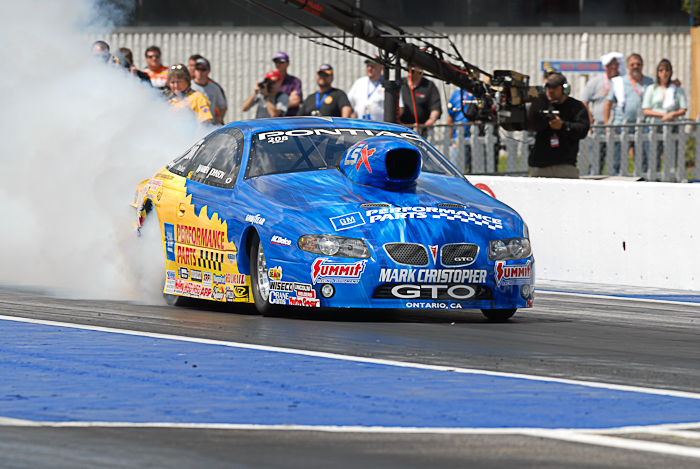 Even the burnouts performed by today’s Pro Stocks don’t match up against what they could be. The Professor can still teach, and this two-shot burnout sequence from the 2007 Gatornationals proves it.
Even the burnouts performed by today’s Pro Stocks don’t match up against what they could be. The Professor can still teach, and this two-shot burnout sequence from the 2007 Gatornationals proves it.
Top Fuel isn’t immune from showmanship criticism either. But there seems to be another factor at work here, and that’s the often stifling influence of overbearing team owners and PR people, who seem possessed with their unassigned “mission” to completely erase whatever personality their driver may have had before he or she signed on. Even in the heat of the moment no driver is going to actually speak his mind, not with his PR person standing right there with that “look” on his face, or knowing that his team owner is going to hear about it word for word. Did Antron Brown really say he hated Clay Millican’s guts? Of course he didn’t, because to do so would risk the wrath of The Don. Besides what’s not to like about Millican? And no, at no time has Antron hinted, stated or in any other manner indicated any displeasure with Millican, so please, hold those emails.
The last time we heard a Top Fuel rant was Whit Bazemore complaining about teammate Hot Rod Fuller’s starting line actions at the 2007 Mile-Highs. “Rant” is too strong a term, ‘cause what we heard was as mild as Ivory Soap. What happened to the days when Richard Tharp’s response to a query about Shirley Muldowney was “I’d like to punch her in the mouth,” and the fans and media collectively fell over laughing? In the 2000s there isn’t a single driver who doesn’t love his entire peer group. It’s actually kinda sickening in a way because everyone knows everyone doesn’t love everyone else, period.
We get it that in today’s world where sponsorship support is everything we’re not going to see the likes of Keeling & Clayton’s “California Charger,” Rance McDaniels’ “Valley Fever” or even (dare I mention it?) the “Jade Grenade,” but at the very least could we unleash the drivers’ personalities? Just a little?
Controversy and outrageous statements drive the media, not platitudes and clichés. NASCAR may act like they don’t approve of Jeff Gordon’s speaking his mind about Clint Bowyer, but deep inside the bowels of their offices they’re chortling with glee. A 45-second sound bite of one driver verbally assaulting another results in reams of print and Internet publicity, thousands of Tweets and re-Tweets and hours of talking head speculation.
Drag racing has none of that. None. Name one time since the infamous
Force-Pedregon finish line confrontation at Indy when serious driver-to-driver actions have resulted in publicity for the sport. It hasn’t happened because drivers are afraid of losing their gigs if they speak out, while team owner mistakenly believe their sponsors will bolt if Driver A says Driver B is a jerk. They won’t because those sponsors understand the value of exposure, no matter how
it’s attained.
Here’s an example. Some years ago an outspoken Whit Bazemore was constantly being monitored by the mid-level executives who followed him around the track. Every time he opened his mouth they cringed in horror, but guess what? It turned out that the most senior of corporate executives loved his outspoken attitude. They knew he was gaining them the kind of publicity that merely winning wouldn’t produce. A colorful, uncensored driver can be just as much of a show as a big burnout or a wheels-up launch, and never think otherwise.
The bottom line here is that NHRA Drag Racing needs to somehow vastly improve the showmanship aspects of the endeavor, and that’s going to take some serious discussions – and an elimination of individual egos. This problem is far bigger than the tuner who only wants to go faster. It’s precisely that tuner who has to help find the solution, but that solution will only be found after the team owners and NHRA sit down and formally recognize that change must come to salvage the sport. More than NHRA, it’s the team owners and tuners who must first acknowledge the problem, and then work towards a solution.
Are you beginning to see a major problem here? Yes, and that is, Who’s going to be the first team owner who says to his fellows, “Guys, I don’t care if we all go a little slower, but we’ve gotta do better burnouts, we’ve gotta leave the line with the front wheels a couple or three feet off the ground, and we’ve gotta let our drivers just say whatever they want to short of insulting our sponsors. We need to talk about this, and now, not later, when it might be too late.”
If you know who those forward-thinking team owners might be, it’s time to have a talk with ‘em – before it becomes too late.





































